#nicolas reusens
Explore tagged Tumblr posts
Text

Bat feeding on a banana flower
Photographed by Nicolas Reusens
9K notes
·
View notes
Text
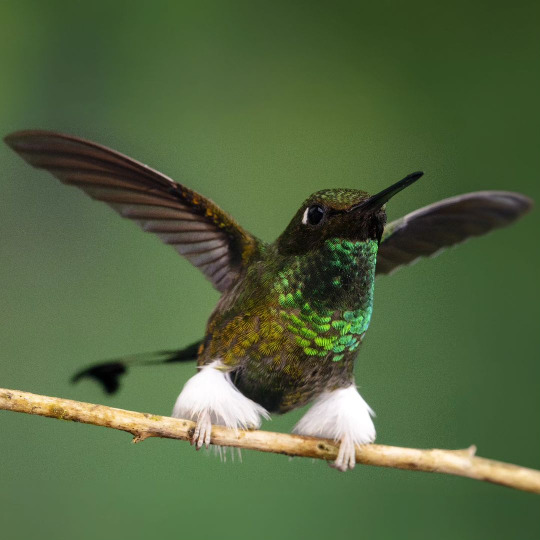
Booted racket-tail hummingbird (Ocreatus underwoodii) in Ecuador. Photo by Nicolas Reusens.
539 notes
·
View notes
Text
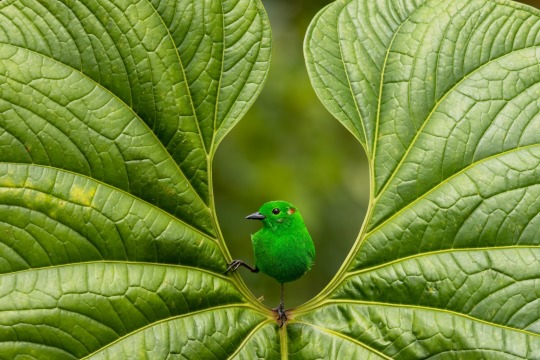
Glistening-Green Tanager (Chlorochrysa phoenicotis),
Mashpi Amagusa Reserve, Ecuador,
© Nicolas Reusens / Bird Photographer Of The Year
#art#photography#still life#bird#nicolas reusens#portrait#nature#green#chlorochrysa phoenicotis#glistening-green tanager#ecuador#jungle#tropical#feathers#colour
351 notes
·
View notes
Text

“Glistening Green”
Glistening-green Tanager (Chlorochrysa phoenicotis), Mashpi Amagusa Reserve, Ecuador.
© Nicolas Reusens
Bird Photographer of the Year
#nicolas reusens#photographer#bird photographer of the year#glistening-green tanager#tanager#bird photography#chlorochrysa phoenicotis#mashpi amagusa reserve#ecuador#nature
64 notes
·
View notes
Text

Nicolas Reusens' photograph of a glistening- green tanager in the Mashpi Amagusa Reserve, Ecuador, won the award's best portrait category. "After hours of waiting, Nicolas Reusens saw the vivid green bird on a perfect heart shaped leaf. Its shimmering feathers reflected a dazzling array of colors."
Credit: Nicolas Reusens
0 notes
Text



Come Have a Bite with the Vampire Bat!
Desmodus rotundus, better known as the common vampire bat, is a species of leaf-nosed bat native to Central and South America, as well as parts of the Caribbean. They are found primarily in tropical forests, particularly rainforests, but can also roam into scrubland and agricultural areas. Common vampire bats roost in hollow trees, caves, and abandoned buildings, making them a common sight in or near urban areas.
As their name implies, the common vampire bat feeds exclusively on blood, particularly those of mammals. In the wild they will feed on large animals like tapirs, but they more frequently go after domesticated animals like cattle, goats, and horses. However, when ideal prey is lacking they will also feed off lizards, turtles, snakes, toads, and crocodiles. Like most bats, D. rotundus uses echolocation to find prey. Then, special heat sensors in the nose help it to detect blood vessels close to the skin; it then bites open a small flap of the skin and drinks its fill. Its saliva contains both painkillers and anticoagulents, so victims seldom notice their host until after it has fed. Predators of D. rotundus include owls, hawks, and eagles.
Common vampire bats live in colonies of about 100 individuals, although colonies consisting of up to 1,000 individuals have been recorded. Within these colonies, males and females roost separately; females cluster in groups of 8-20, while males roost individually and guard territories against other males. However, D. rotundus is highly social, and males and females will both groom members of the same and opposite sex. This grooming can even extend to homosexual behaviours like genital licking, which is thought to reinforce hierarchies and strengthen social bonds.
D. rotundus can breed year-round, but females only raise one pup per year. Males typically mate with females in or near their defended territories. Afterwards, females carry their pregnancy for about 7 months before giving birth to a single pup. These young feed on their mother's milk for their first month; during this time, other adult females will often provide the mother with excess blood as she cannot hunt for herself. Once the pup is weaned they begin recieving blood from their mothers, and at four months they begin accompanying her on hunts. At about five months they are fully independent; females will remain in their mother's roost while males will leave to establish their own territories. Young become fully mature at about a year old, and adults may live to 12 years in the wild.
The common vampire bat is relatively plain looking, as far as bats go. They are generally gray or brown, with darker fur over their backs and dark brown or black membranes along their wings. The nose has a distinct triangle shape, which houses special heat-sensing organs. Likewise, the ears are large and triangular, used for echolocation. Adults are rather small, about 9 cm (3.5 in) long with an average wingspan of 18 cm (7 in) and a weight of 25–40 grams (2 oz).
Conservation status: The IUCN lists D. rotundus as Least Concern. In fact, populations of the common vampire bat are increasing due to the abundance of livestock as a food source.
If you like what I do, consider buying me a ko-fi!
Photos
Jose Gabriel Martinez Fonseca
Sheri & Brock Fenton
Nicolas Reusens
#common vampire bat#Chiroptera#Phyllostomidae#vampire bats#leaf-nosed bats#bats#mammals#tropical forests#tropical forest mammals#tropical rainforests#tropical rainforest mammals#urban fauna#urban mammals#central america#south america#queer fauna#nature is queer#animal facts#biology#zoology#ecology
220 notes
·
View notes
Photo

Red-eyed Tree Frog (Agalychnis callidryas) by Nicolas Reusens
(via Pinterest)
50 notes
·
View notes
Text

A glistening-green tanager sits in the crook of a leaf. Nicolas Reusens / Bird Photographer of the Year 2023
from https://www.smithsonianmag.com/smart-news/see-ten-stunning-images-from-the-bird-photographer-of-the-year-awards-180982955/
15 notes
·
View notes
Text
Hi, I'm Bruno!
Any pronouns will do. 20s
my art tag: my art
other tags:
arachnids bug art coleoptera hemiptera hymenoptera isopoda lepidoptera mantids myriapoda
so on and so on (i tag all irl bugs by orders and other taxonomic labels but those are more for me /organizational purposes)
I follow back with my main @mysticjrs
also if you wanna send an ask feel free!

Pfp by Nicolas Reusens.
Header by tjeales
8 notes
·
View notes
Text

Bat feeding on a banana flower Photographed by Nicolas Reusens
0 notes
Text
#FollowFriday Five: Award-Winning Bird Photographers
The results of the Bird Photographer of the Year competition are in, and as you might have guessed, several of the winning photographers have a strong Instagram presence. Here's where you can find them:
2023 Bird Photographer of the Year, Jack Zhi @jack.zhi.photo, won gold in the bird behavior category for his image of a peregrine falcon attacking a brown pelican that got too close to its nest.
instagram
Canadian wildlife photographer and biology Liron Gertsman @liron_gertsman_photography won in the video category for this fascinating video of sharp-tailed grouse courtship displays.
youtube
Barcelona-based wildlife photographer Nicolas Reusens @nicolasreusens won Gold in the Best Portrait category for his image of a green tanager perched in the crook of a heart-shaped leaf.
instagram
Underwater photographer Henley Spiers @henleyspiersphoto loves to capture the occasional seabird as it dives for fish underwater.
instagram
Spanish Photographer Rafael Armada @rafaelarmadaphoto won gold in the "Birds in Flight" category with his photo of a sword-billed hummingbird mid-flight in Bogota, Colombia.
instagram
To see more award-winning bird photography, check out "Ten Stunning Images From the Bird Photographer of the Year Awards" in Smithsonian Magazine online.
0 notes
Text
Bird Photographer of the Year 2023 Highlights Avian Attitudes and Winged Wonders Around the World | Colossal
SEPTEMBER 5, 2023 KATE MOTHES Nicolas Reusens, “Glistening Green,” Glistening-green Tanager (Chlorochrysa phoenicotis), Mashpi Amagusa Reserve, Ecuador. Gold Award Winner: Best Portrait. All images © the photographers and Bird Photographer of the Year 2023 The judges of the Bird Photographer of the Year competition sifted through more than 20,000 images this year. The judges of the 2023 Bird…

View On WordPress
1 note
·
View note
Text

Glistening green, Nicolas Reusens, Spain – best portrait, gold award
Reusens said: ‘Venturing into the tropical forest, I was excited to spot the rare glistening-green tanager (Chlorochrysa phoenicotis). After hours of waiting, I saw the vivid green bird on a perfect heart-shaped leaf. Its shimmering feathers reflected a dazzling array of colours. I captured every detail, grateful for this magical moment amid the lush jungle backdrop.’Location: Mashpi Amagusa reserve, Ecuador
Photograph: Nicolas Reusens/Bird photographer of the year 2023 / Guardian Newspaper #ecuador
0 notes
Text
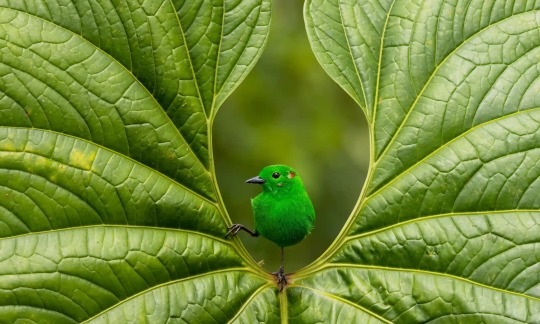
Glistening green, Nicolas Reusens, Spain 🇪🇸 — Best Portrait, Gold Award! Reusens said: ‘Venturing into the tropical forest, I was excited to spot the rare Glistening-Green Tanager (Chlorochrysa Phoenicotis). After hours of waiting, I saw the vivid green bird on a perfect heart-shaped leaf. Its shimmering feathers reflected a dazzling array of colours. I captured every detail, grateful for this magical moment amid the lush jungle backdrop.’Location: Mashpi Amagusa Reserve, Ecuador 🇪🇨. Photograph: Nicolas Reusens/Bird photographer of the year 2023

Grab the Bull By the Horns, Jack Zhi, US 🇺🇸 — Bird 🦅 Behaviour, Gold Award, and Overall Winner! Zhi said: ‘During the breeding season, a Female Peregrine Falcon (Falco Peregrinus) fiercely protects her young, attacking anything that comes near the nest. For four years, I attempted to capture these rare moments of her attacking large brown pelicans (Pelecanus occidentalis) with incredible speed and agility. The high-speed chase made it challenging to capture a closeup shot with a long lens. The falcon’s precision was amazing as it struck at the pelican’s head.’ Location: Southern California, US 🇺🇸. Photograph: Jack Zhi/Bird photographer of the year 2023
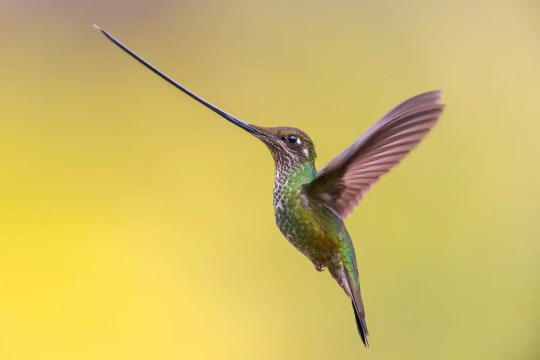
Flying Sword, Rafael Armada, Spain 🇪🇸 — Birds 🦅 in Flight, Gold Award! The Sword-Billed Hummingbird (Ensifera Ensifera), common in the Andean forests, has the world’s longest bill relative to its size. The bird’s unique bill, which is adapted to feed on flowers with long petals, makes it a vital pollinator as bees and butterflies cannot reach the nectar on these plants. This image captures the bird approaching a feeder, with a natural background and lighting. Location: Bogotá, Colombia 🇨🇴. Photograph: Rafael Armada/Bird photographer of the year 2023
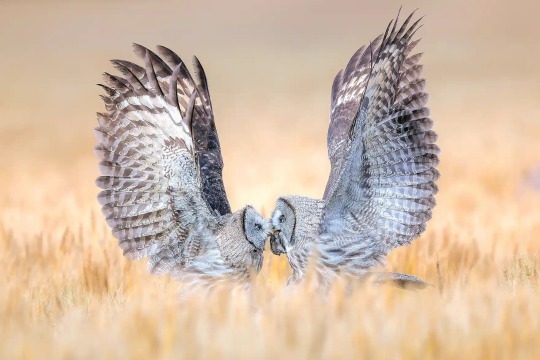
A Mother’s Love, Qiuqing Mu, China 🇨🇳 — Bird 🦅 Behaviour, Bronze Award! Mu said: ‘A Great Grey Owl (Strix Nebulosa) adult was hunting in a wheat field, and a juvenile flew to the edge of the field to be fed. Suddenly, the parent caught some prey. I quickly pressed the shutter and captured a heartwarming moment between the parent and the next generation.’ Location: Zhejiang, China 🇨🇳. Photograph: Qiuqing Mu/Bird photographer of the year 2023

Common Nighthawk in Flight, Richard Sanchez, Cuba 🇨🇺 — Birds 🦅 in Flight, Bronze Award! Sanchez said: ‘At 10am, a Barn Owl (Tyto Alba) appeared before us and we followed it to a crop field where it began hunting. Nearby, several cooperative common nighthawks (Chordeiles Minor) circled around our vehicle. I captured a perfect shot of them in flight, though it was partly a matter of luck.’ Location: Florida, US 🇺🇸. Photograph: Richard Sanchez
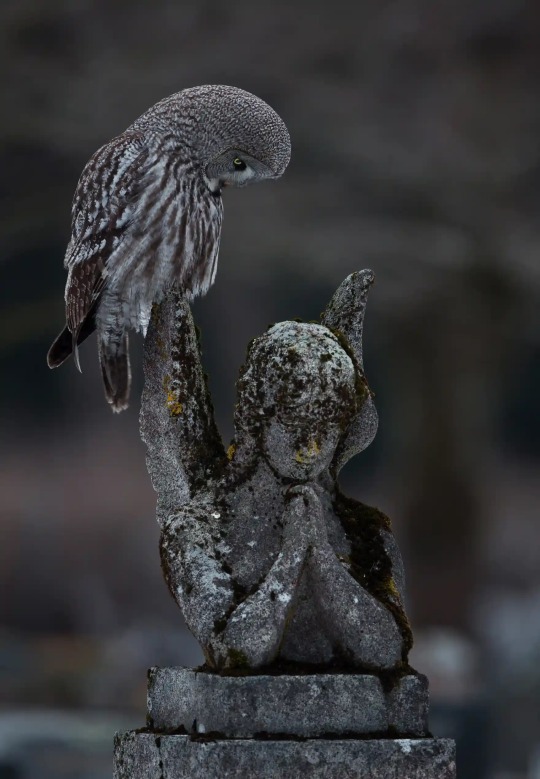
A Moment of Prayer, Arto Leppänen, Finland 🇫🇮 — Urban Birds 🦅, Gold Award! Leppänen said: ‘During winter migration, owls from northern Finland often head to the south where they can find more food due to less snow. This Great Grey Owl (Strix Nebulosa) chose a cemetery with abundant voles as its hunting ground. While hunting, the owl would often stop on tombstones or other structures to observe the area. Keeping a safe distance, I followed the owl and managed to capture a fleeting moment when it landed briefly on a beautiful angel statue.’ Location: Helsinki, Finland 🇫🇮. Photograph: Arto Leppänen/Bird photographer of the year 2023
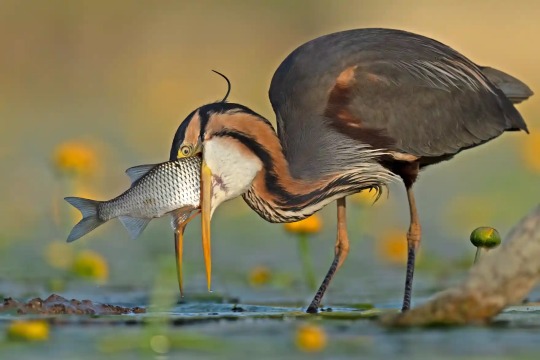
No Way Out, Antonio Aguti, Italy 🇮🇹 — Comedy Bird 🦅 Photo, Gold Award! The Purple Heron (Ardea Purpurea) is a migratory bird that nests in the lake basins of the Italian peninsula and feeds mainly on fish, although it also preys on mice, snakes, toads and other creatures. In this shot, the heron caught a large crucian carp (Carassius carassius) and swallowed it after several attempts to turn the fish on to its side. Location: Lake Chiusi, Italy 🇮🇹. Photograph: Antonio Aguti/Bird photographer of the year 2023

Parenting Goals, Thomas Vijayan, Canada 🇨🇦 — Best Portrait, Silver Award! Vijayan said: ‘Before capturing this image, I spent two days observing these [Emperor] Penguins (Aptenodytes Forsteri), lying flat on the ice to avoid scaring them. Waiting for the chick to appear, I finally got this touching shot of parental love. I trekked eight hours a day on soft snow to reach this colony and even made friends with some penguins.’ Location: Antarctica 🇦🇶. Photograph: Thomas Vijayan/Bird photographer of the year 2023

Coming Storm, Jake Levin, US 🇺🇸 — Best Portrait, Bronze Award! Levin said: ‘The best place to see Canada 🇨🇦 Jays (Perisoreus Canadensis) for those living in Montreal is across the border in upstate New York. During my winter 2022 visit to Adirondack Park, I focused on capturing this species. This image shows a jay seemingly concerned that the snow is ramping up, and rightly so, as it made driving back home a challenge.’ Location: Adirondack Park, New York, US 🇺🇸. Photograph: Bird photographer of the year 2023
0 notes
Photo

This jumping spider, Saitus barbipes, shows off its red handband and red stripe down the third pair of its legs.
(Image credit: Nicolas Reusens / Getty Images)
17 notes
·
View notes
